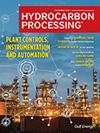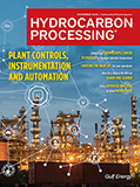Products
Maersk to use SAF to decarbonize airfreight travel
Maersk has signed an agreement to promote the decarbonization of airfreight through the use of Sustainable Aviation Fuel. Lufthansa Cargo will use 400 tons of SAF on behalf of Maersk in the remainder of 2024.
Chevron sees California's fuel inventory law raising prices for customers
Chevron said that California's recently enacted legislation on oil refineries needing to maintain minimum fuel stocks was "flawed."
Improving ammonia production sustainability
While approximately 70% of ammonia production is used to make fertilizers, it is also identified as the largest carbon dioxide (CO2)-emitting chemical industry process. This article examines several novel technologies to improve the sustainability of the ammonia production process.
Measuring hydrogen, tomorrow’s innovative fuel
Because it can be stored, transported and burned without GHG emissions, hydrogen (H2) is emerging as a potential frontrunner as a clean fuel source. However, transporting H2 must be efficient and cost-effective, a task that requires careful consideration and innovative solutions. This article will examine requirements for effective H2 transportation and accurate measurement in its challenging environments.
Hygenco selects Topsoe as technology provider for green ammonia production
Hygenco has chosen Topsoe as technology licensor for the first phase of a planned 750-tpd green ammonia complex Gopalpur, Odisha, India.
ExxonMobil plans 1 Blbs/yr of advanced recycling by 2027
ExxonMobil plans to invest more than $200 MM to expand its advanced recycling operations at its sites in Baytown and Beaumont, Texas (U.S.), as well as additional investments globally to reach recycling capacity of 1 Blbs/yr by 2027.
Syensqo expands U.S. production capacity for advanced polymers
Syensqo has significantly increased its U.S. production capacity for its Udel polysulfones sulfone advanced polymers used in critical health, water and energy applications.
Aramco, Rongsheng Petrochemical sign framework agreement for SASREF petrochemicals expansion project
Aramco, Aramco affiliate Saudi Aramco Jubail Refinery Company (SASREF), and an affiliate of Rongsheng Petrochemical Co. Ltd. (Rongsheng Petrochemical) have signed a Development Framework Agreement in Beijing, China, that paves the way for an expansion project at SASREF in Jubail, Kingdom of Saudi Arabia.
Sinopec, Aramco start building $10-B petchem complex in China's Fujian province
Sinopec Corp and Saudi Aramco have started constructing a $10-B refinery and petrochemical complex in southeast China's Fujian province, marking another big investment in the country's recent wave of petrochemicals expansions.
Clariant EnviCat N2O-S catalyst to cut CO2eq by 690,000 tpy at Hengli’s nitric acid plant in China
Clariant announced the successful installation of its EnviCat N2O-S catalyst at Hengli Petrochemical's 300,000-tpy nitric acid plant in Dalian, China. With the successful installation of the catalyst in June 2024, the plant is projected to reduce its N2O emissions by 690,000 tpy of CO2eq.

- ITT to acquire SPX Flow for > $4.77 B, expanding leadership in highly engineered components and adjacent flow technologies 12/5
- MOL Group introduces eco-friendly Bag-in-Box packaging for lubricants 12/5
- Addis Energy secures $8.3 MM to scale its transformative approach to low-cost ammonia production 12/5
- World Fuel Services supplies cruise line with waste-based biofuels 12/5
- Chevron announced $18 B-$19-B CAPEX budget for 2026 12/5
- Russia and India sign deal to build urea plant in Russia 12/5




